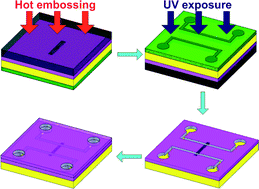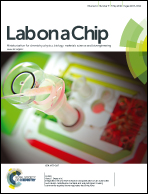A novel hybrid patterning technique for micro and nanochannel fabrication by integrating hot embossing and inverse UV photolithography
Abstract
Nanofluidic devices with micro and nanostructures are becoming increasingly important for biological and chemical applications. However, the majority of the present fabrication methods suffer from a low pattern transfer quality during the simultaneous embossing of the microscale and nanoscale patterns into a thermoplastic polymer due to insufficient polymer flow. In this work, a novel hybrid patterning technique, integrating hot embossing and inverse ultraviolet (UV) photolithography, is developed to fabricate micro and nanochannels with a high replication precision of the SU-8 layer. The influence of embossing temperature and time on the replication precision was investigated. The effect of UV lithography parameters on the micro and nanochannel pattern was analyzed. To improve the SU-8 bonding strength, the influence of the O2 plasma treatment parameters on the water contact angles of the exposed and unexposed SU-8 layer were studied. A complete SU-8 nanofluidic chip with 130 nm wide and 150 nm deep nanochannels was successfully fabricated with a replication precision of 99.5%. Compared with most of the current processing methods, this fabrication technique has great potential due to its low cost and high pattern transfer quality of the SU-8 micro and nanochannels.


 Please wait while we load your content...
Please wait while we load your content...